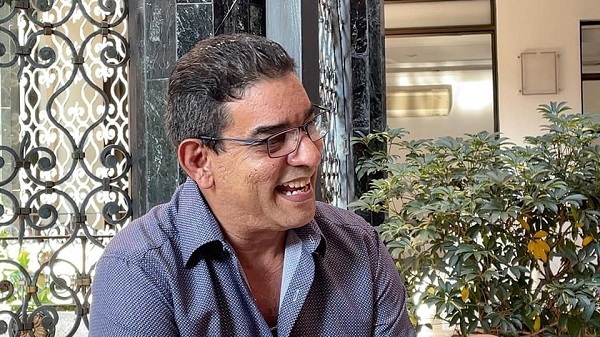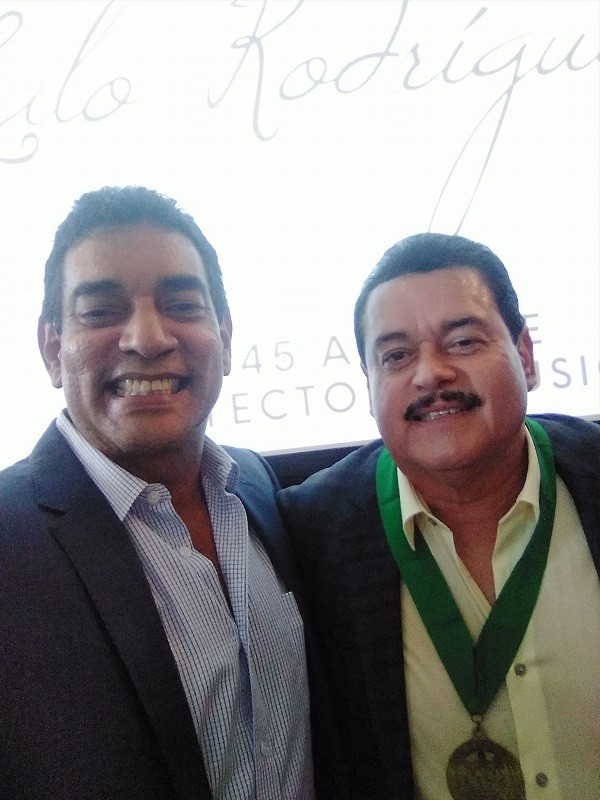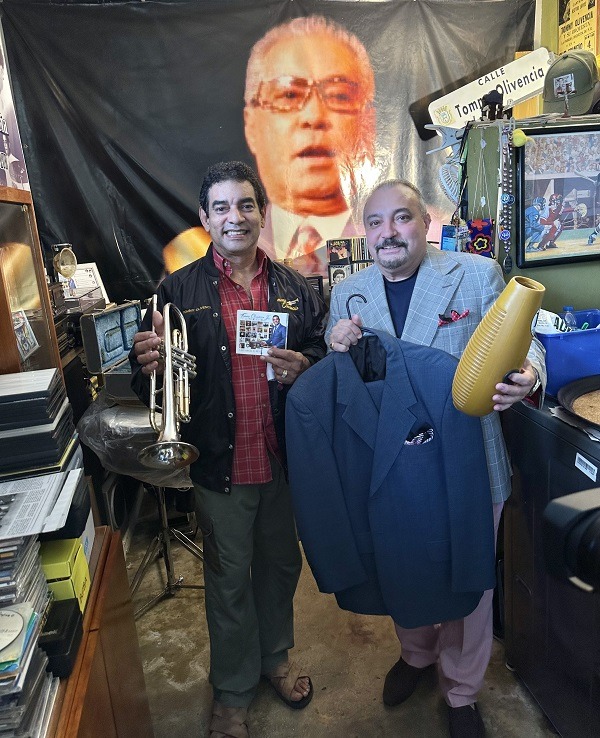Inherited talent
The salsa museum has received several of the greatest artists and their families, who have donated valuable objects related to their careers. Today, it was the turn of Ángel Tomás Olivencia Rodríguez, who is artistically known as Tommy Olivencia Jr.
Tommy Olivencia Jr. is a percussionist and timbalero born on March 19, 1969 and is the son of the famous Puerto Rican musical icon and director of the Primerísima Orchestra Tommy Olivencia, from whom he inherited his great talent and has left his family’s name very high.

Planté bandera de nuevo
Eager to find his own way and make his own name in the industry, the artist made his debut with the recording ”Planté bandera de nuevo”, which was carried out in his native country and presents a total of nine tracks, some of them created by composer and percussionist Jerry Ferrao.
A very important fact during this period is that the timbalero made his official debut for AJ Records, Inc. in the framework of the 40th anniversary of Tommy Olivencia Y Su Orquesta at the beginning of this millennium, making this event even more special.
It is also important to highlight that this colorful musical work included the participation of figures such as Luis ”Perico” Ortiz. Máximo Torres, Tito Rivera, Pedro Bermúdez and many others. All these big talents made it possible for Tommy Olivencia Jr.’s first step as an artist to be on the right foot.
After Tommy Olivencia’s death
Once the incomparable Tommy Olivencia passed away, his son took the lead on the Primerísima Orchestra, which represented a great professional challenge for his career considering that many of his father’s hits are already salsa classics worldwide.

At the beginning, ”Tomito”, as he is also affectionately known, wanted to keep alive his father’s legacy with his most famous songs such as ”El Son Cubano”, ”Trucutú” or ”Doroteo”. However, there came a point where Olivencia and the rest of the members of La Primerísima had to get to work with new songs to join the previous hits.
When asked about these changes he had to make, he said that he has always worked on his father’s original repertoire, since the audience always asks for those songs in his performances. However, he says he is very happy to be able to contribute his grain of sand with the song ”Mi Querido Viejo”, which was dedicated to Tommy Olivencia senior and of which he is proud for the strng impact that it has had.
Something that made him very happy is that he was finally able to record his first video clip with the orchestra and other great artists such as Gilberto Santa Rosa, Lalo Rodriguez, Sammy Gonzalez, among others.
Although he feels quite pleased to be able to continue with the steps taken his father, he is very proud to offer completely new songs to join the already prolific repertoire of La Primerísima. Among the new songs are ”Un Legendario de Pueblo” and ”Evelio”.

Tommy Olivencia Jr. at the Spanish Harlem Salsa Museum
As well as a good number of other stars and their families, we were fortunate to enjoy the pleasant presence of Tommy Olivencia Jr. at the Spanish Harlem Salsa Museum, where he and the president of the institution, Johnny Cruz, had a nice chat and walk around the facilities of the place.
At these visits, it is very common for visitors to make donations to contribute to the extensive collection that the museum has to present and this was no exception. ”Tomito” donated a suit and the güiro of maestro Tommy Olivencia that whosoever visits the museum has the opportunity to appreciate some of the elements that his father used during his career.
From this space, we really thank his visit and his contributions and we wish him the greatest success in all the projects he undertakes both professionally and personally, especially what has to do with music.
Read also: Joe Bataan’s music remains in force

By Johnny Cruz, ISM Correspondent, New York, New York City















